Si të keni sukses me tregtimin në internet të opsioneve binare 2023
Binaryoptions.com ofron edukimin më të mirë rreth tregtimit, me më shumë se 10 vjet përvojë në tregtimin online, ne do t'ju ndihmojmë:
- Shmangia e mashtrimit në sinjalet tregtare dhe robotët
- Strategjitë
- Udhëzues për fillestarët
- Tregtimi i njohurive nga ekspertët
- Agjentët më të mirë për tregtim
- Shqyrtime dhe këshilla të platformës tregtare
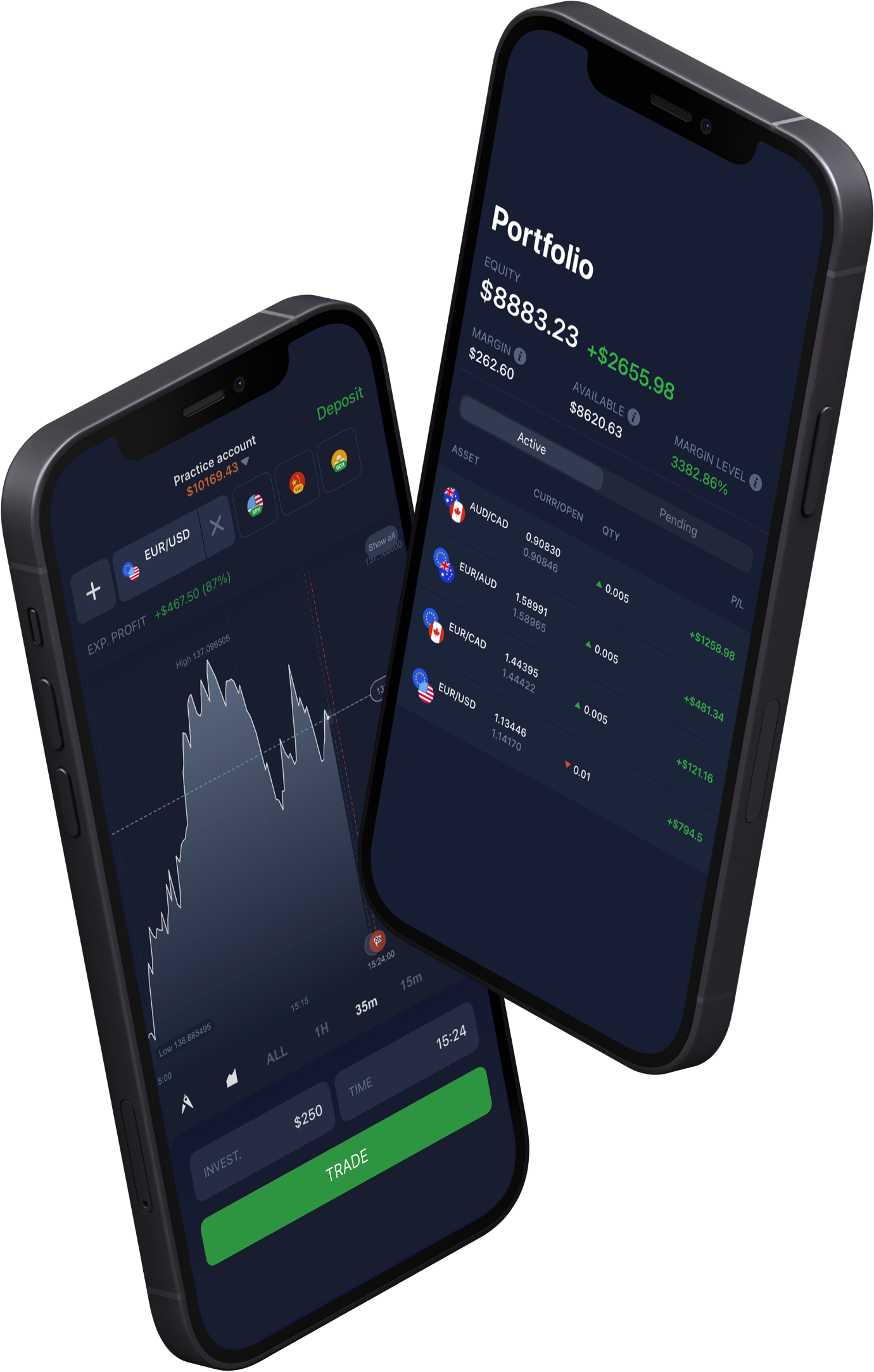







Cilat janë opsionet binare? – Përkufizimi
Opsioni Binar është një produkt financiar i njohur si opsioni "Gjithçka ose Asgjë" ku rezultati bazohet në dy opsione të ndryshme. Ju mund të fitoni një kthim të lartë ose të humbni shumën tuaj të investimit. Është një opsion i thjeshtë "po ose jo", prandaj quhet "binar".
Ju sugjeroni që një çmim aktual në bursë do të rritet ose do të ulet brenda një kohe skadimi. Nëse keni të drejtë në një afat kohor të caktuar, ju fitoni një shumë monetare që fiksohet nga ndërmjetësi. Tregtari mund të zgjedhë kornizën kohore (kohën e skadimit) në platformën e ndërmjetësit. Është e mundur të tregtoni opsione nga 30 sekonda kohëzgjatje deri në 2 muaj ose edhe më shumë. Ka rëndësi vetëm nëse çmimi është më i lartë ose më i ulët se çmimi juaj i goditjes kur përfundon koha e skadimit.
Faktet kryesore:
- Një opsion Binary ka vetëm një rezultat fitues ose humbje.
- Tregtarët mund të fitojnë një kthim të lartë në varësi të ofertës së ndërmjetësit.
- Një opsion Binary skadon pas një kohe të caktuar skadimi dhe tregon rezultatin menjëherë më pas.
- Rreziku është i kufizuar për shkak të të gjithë shumës së investimit.
- Opsionet binare janë të rregulluara në SHBA, por tregtohen kryesisht në det të hapur në vende të tjera.
Provoni funksionalitetin e opsioneve binare këtu:
Opsionet binare ofrohen nga agjentë OTC (pa recetë) të cilët përputhen me porositë midis tregtarëve të ndryshëm.
Shuma e investimit mund të jetë deri në $1 ose deri në $1,000. Kjo varet nga platforma ku tregtoni.
Edhe nëse jeni fillestar në tregtimin binare, rekomandohet të filloni me një llogari demo falas. Kjo do të thotë që ju jeni duke tregtuar me para virtuale dhe nuk rrezikoni para reale në tregje.
Shembull tregtimi:
Për të filluar tregtimin, ndiqni këto hapa:
- Zgjidhni aktivin që dëshironi të tregtoni
- Bëni një parashikim të lëvizjes së ardhshme të çmimeve (lart ose poshtë)
- Zgjidhni kohën e skadimit të opsionit
- Zgjidhni shumën e investimit për tregtinë (ajo fillon nga $1)
- Filloni tregtinë dhe hyni në treg me një çmim grevë.
- Prisni derisa koha e skadimit të përfundojë dhe opsioni binar të skadojë
- Çmimi duhet të jetë lart ose nën çmimin tuaj të goditjes (në varësi të drejtimit të tregtisë)
- Bëni një fitim deri në 100% ose humbni shumën tuaj të investimit
Për më tepër, lexoni tonë udhëzues i plotë se si të tregtoni!
Rreth nesh – Binaryoptions.com
Opsionet binare duken si një investim me rrezik të lartë që është e njohur nga fillestarët dhe madje edhe tregtarët profesionistë. Është një formë bastesh në treg për të fituar një fitim ose humbje.
Për më shumë se 10 vjet, ne e tregtojmë dhe e kemi dashur këtë instrument financiar sepse është një mënyrë shumë e mirë për të fituar para në një afat të shkurtër kohor. Konstrukti i produktit financiar na lejon përdorni strategji të veçanta, të cilat ne ju tregojmë në faqen tonë të internetit.
Ne jemi tregtarë, analistë dhe shkrimtarë me përvojë që dëshirojmë të ndihmojmë publikun të kuptojë tregtinë me më shumë sukses. Ka kaq shumë lajme të rreme dhe të rreme në lidhje me të në internet. Me faqen tonë, ne duam t'u themi "JO" humbjeve, mashtrimeve dhe informacioneve të rreme në tregtimin e opsioneve binare.
Mësoni më shumë nga përvojat dhe gabimet tona në të kaluarën. Ne do t'ju tregojmë në mënyrë transparente se si të keni më shumë sukses në tregtimin binare.

Pse mund të na besoni
Si të sigurohemi që lexuesit tanë të marrin informacion të saktë dhe njohuritë më të mira? – Me ekipin tonë redaktues, ne po punojmë duke përdorur strikte udhëzime editoriale. Të gjithë artikujt tanë të botuar janë të kontrolluar dhe të vërtetuar me fakte nga ekspertë të vërtetë tregtar. Për shqyrtimin dhe krahasimin e ndërmjetësve, ne ndjekim tonën metodologjia e rishikimit. Platformat kontrollohen me të njëjtat kritere, të cilat janë të rëndësishme për të pasur një përvojë të sigurt tregtare për lexuesit tanë.
Ne punojmë së bashku vetëm me marka të besueshme të cilat janë shumë vite në industri. Brokerët testohen me paratë tona në kushte reale të tregut. Sidoqoftë, ne nuk mund t'i parandalojmë mashtrimet 100%, por rezultati ynë i besimit mund t'ju ndihmojë me siguri. Ne shqyrtojmë çdo ndërmjetës për besueshmërinë dhe veçoritë e sigurisë. Për më tepër, ne kontrollojmë rregullatorët e tyre dhe detajet zyrtare të kompanisë për t'u siguruar që u rekomandojmë lexuesve tanë ofertat më të mira.
Agjentët më të vlerësuar - filloni tregtimin këtu:
Të ndërmjetësi i opsioneve binare është ndërmjetësi midis tregtarit dhe tregjeve financiare. Këto platforma ju lejojnë të shkoni shkurt ose të shkoni gjatë në tregje të ndryshme. Disa prej tyre ofrojnë 100 asete për tregtim; të tjerët ofrojnë më shumë se 500 asete për tregtim.
Ekziston një larmi e madhe ndërmjetësish dhe platformash në internet; në binaryoptions.com, ne krahasuam më të mirat me njëri-tjetrin. Ato ju lejojnë të filloni tregtimin me një depozitë minimale të vogël prej $ 10 dhe shumën minimale të tregtisë prej $ 1. Fitimet maksimale nuk janë të kufizuara.
100+ tregje
- Pranon klientë ndërkombëtarë
- Pagesa të larta 95%+
- Platformë profesionale
- Depozita të shpejta
- Tregti Sociale
- Shpërblime falas
(paralajmërim rreziku: Tregtimi është i rrezikshëm)
100+ tregje
- Min. depozitë $10
- $10,000 demonstrim
- Platformë profesionale
- Fitim i lartë deri në 95%
- Tërheqje të shpejta
- Sinjalet
(paralajmërim rreziku: Tregtimi është i rrezikshëm)
300+ tregje
- Depozita minimale $10
- Llogari demo falas
- Kthim i lartë deri në 100% (në rast të një parashikimi të saktë)
- Platforma është e lehtë për t'u përdorur
- Mbështetje 24/7
(paralajmërim rreziku: kapitali juaj mund të jetë në rrezik)
100+ tregje
- Pranon klientë ndërkombëtarë
- Pagesa të larta 95%+
- Platformë profesionale
- Depozita të shpejta
- Tregti Sociale
- Shpërblime falas
nga $50
(paralajmërim rreziku: Tregtimi është i rrezikshëm)
100+ tregje
- Min. depozitë $10
- $10,000 demonstrim
- Platformë profesionale
- Fitim i lartë deri në 95%
- Tërheqje të shpejta
- Sinjalet
nga $10
(paralajmërim rreziku: Tregtimi është i rrezikshëm)
300+ tregje
- Depozita minimale $10
- Llogari demo falas
- Kthim i lartë deri në 100% (në rast të një parashikimi të saktë)
- Platforma është e lehtë për t'u përdorur
- Mbështetje 24/7
nga $10
(paralajmërim rreziku: kapitali juaj mund të jetë në rrezik)
Përpara se të filloni, provoni llogarinë demo
A llogari demo është një llogari e veçantë tregtare me para virtuale. Kjo do të thotë që bilanci i llogarisë nuk është i mbushur me para reale. Të gjitha fondet virtuale mund të humbasin pa rrezik për paratë tuaja. Kjo llogari është alternativa më e mirë për të filluar tregtimin e binarëve. Ne ju rekomandojmë të filloni me një llogari demo dhe të mos rrezikoni paratë tuaja në fillim. Tregtimi binar ndonjëherë duket shumë i lehtë, por e vërteta është se shumica e tregtarëve humbasin paratë e tyre.
Përfitimi i përvojës, zhvilloni një strategji tregtare, mësoni më shumë rreth tregjeve të ndryshme dhe merrni njohuri për platformat e tregtimit, duhet të përdorni fillimisht llogarinë demo për sigurinë tuaj. Nëse ndiheni rehat dhe keni bërë disa fitime me para virtuale, mund të filloni të tregtoni llogari reale.
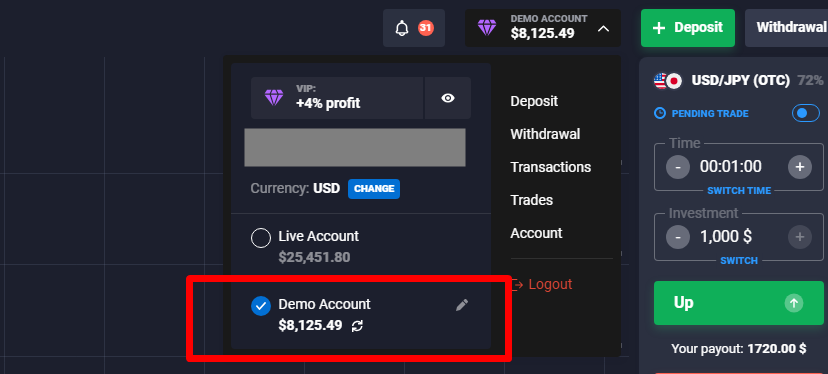
(paralajmërim rreziku: Kapitali juaj mund të jetë në rrezik)
Kushtet më të rëndësishme:
Si fillestar nuk është e lehtë të kuptosh opsionet binare në 5 minutat e para. Sigurohuni që të keni kohë të mjaftueshme për të lexuar këto terma të rëndësishëm dhe për t'i kuptuar ato. Është niveli kyç për suksesin tuaj. Nëse nuk e kuptoni produktin financiar dhe veçoritë e tij, mund të përfundoni duke humbur të gjitha paratë tuaja. Në pjesën tjetër, ne do t'ju tregojmë termat më të rëndësishëm dhe do t'ju shpjegojmë ato.
- Aktivi themelor – Është tregu në të cilin tregtoni binarët.
- Koha e skadimit – Ju do të merrni rezultatin përfundimtar kur tregtimi të përfundojë.
- Cmim fiks – Çmimi juaj ku keni filluar të blini ose shisni. Çmimi duhet të jetë mbi ose poshtë për të bërë një fitim.
- Shuma fikse e fitimit – Kthimi i mundshëm që mund të merrni nga tregtia
- Opsioni i thirrjes – Ju investoni në rritjen e çmimeve
- Vendos opsionin – Ju investoni në uljen e çmimeve
Aktivi themelor i një opsioni binar

Tregu themelor mund të jetë aksione, mallra, kriptovaluta, forex ose ETF. Varet nga ndërmjetësi se cilat asete ofrohen. Tregtia thjesht blen ose shet një kontratë opsionesh për këto aktive themelore. Nuk është investim i vërtetë në aktiv si blerja e arit nga një shitës me pakicë. Ju thjesht tregtoni kontratat e opsioneve.
Koha e skadimit të një opsioni

Opsioni binar mbyllet gjithmonë në një kohë të caktuar skadimi. Për shembull, mund të tregtoni 30 sekonda, 60 sekonda, apo edhe 1 muaj. Varet nga ndërmjetësi që zgjidhni dhe cilat data të skadimit janë të disponueshme. Nëse arrihet data e skadimit, çmimi bazë i aktivit duhet të jetë mbi ose nën objektivin tuaj të çmimit.
Çmimi objektiv/çmimi goditës

Objektivi i çmimit është pika juaj bazë e hyrjes ose çmimi i goditjes. Nëse filloni të blini ose shisni një opsion binar, çmimi i goditjes është çmimi aktual i tregut. Pra, është shumë e rëndësishme që të keni një kohë të mirë në anën tuaj. Edhe nëse e humbisni objektivin tuaj të çmimit me 0,1 pikë, mund të humbni të gjithë investimin tuaj. Por nga ana tjetër, ju mund të fitoni një sasi të lartë kthimi nëse keni të drejtë. Ndoshta ju pyesni: A mund të kem dy objektiva çmimesh? – Përgjigjja është e thjeshtë: kjo nuk është e mundur.
Shuma fikse e fitimit
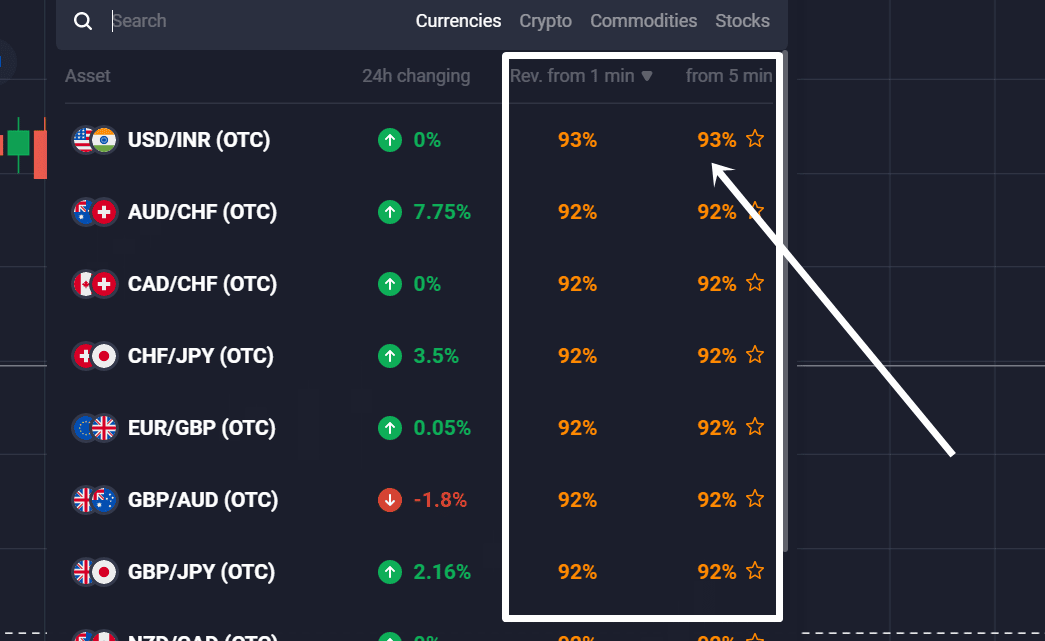
Një opsion binar ka një shumë fikse fitimi që fiksohet nga ndërmjetësi. Pagesa fikse mund të jetë 60%, 70%, apo edhe 90% e shumës suaj të investimit. Por mbani në mend se mund të humbni të gjithë investimin tuaj nëse merrni vendime të gabuara tregtare. Ka vetëm dy rezultate: Ju humbni ose fitoni. Pagesa fikse varet gjithashtu nga tregu themelor që tregtoni dhe koha e skadimit. Ndonjëherë ekzistojnë tre lloje të rezultateve të një tregtie me opsione binare: ju humbni, fitoni ose i merrni paratë kur tregu arrin saktësisht çmimin e goditjes.
Opsioni i thirrjes dhe opsioni i vendosjes
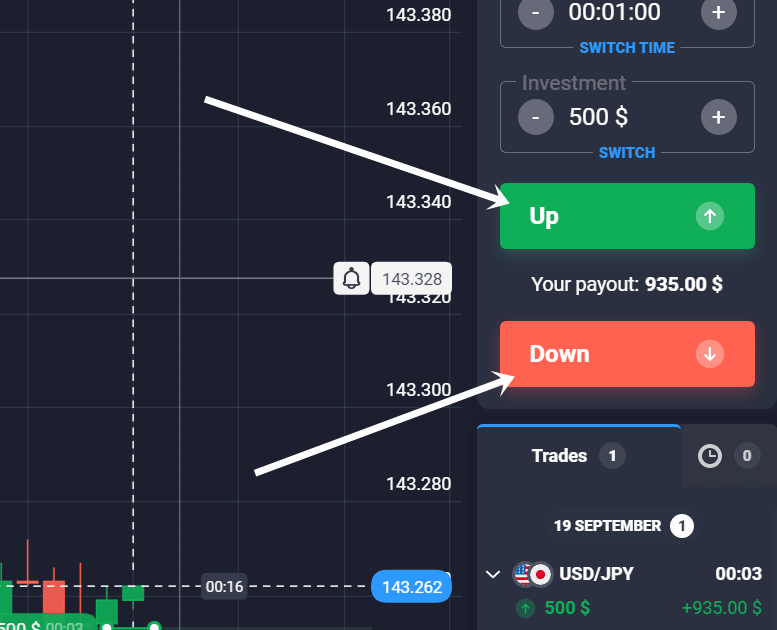
Binary Options është një produkt i thjeshtë tregtar me rrezik të kufizuar. Ka vetëm dy mënyra për ta tregtuar atë: Ju keni opsionet e thirrjeve dhe opsionet e vendosjes. Opsioni i thirrjes do të thotë që ju thoni se një treg i opsioneve binare do të rritet mbi një çmim të caktuar në një kohë të kufizuar skadimi. Një opsion vendosjeje do të thotë që ju thoni se një treg do të bjerë nën një çmim të caktuar në një kohë të kufizuar skadimi.
Për të llogaritur fitimin, mund të përdorni mjetin tonë të brendshëm, kalkulatorin e fitimit:
Duke përdorur mjetin e mëposhtëm, ju llogaritni fitimin ose humbjen në tregtimin e opsioneve binare. Fusni shumat e investimit, kthimin nga ndërmjetësi dhe shumën e tregtimeve të humbura dhe fituese. Pastaj ju shihni rezultatin e përgjithshëm të tregtimit tuaj. Për më shumë informacion, mund të na vizitoni faqja e kalkulatorit të fitimit.
(paralajmërim rreziku: Kapitali juaj mund të jetë në rrezik)
Avantazhet dhe disavantazhet e opsioneve binare:
Përparësitë:
- Kufizoni rreziqet
- Fitimi i lartë në dispozicion
- Tregtim afatshkurtër dhe afatgjatë
- Lehtë për t'u kuptuar
- Në dispozicion platforma profesionale
- Mund të përdoret për mbrojtje
- Mund të përdoret në çdo treg financiar
Disavantazhet:
- Mund të bëhet i varur
- Ka disa ndërmjetësime të këqija atje
- Nuk disponohet në çdo vend
(paralajmërim rreziku: Kapitali juaj mund të jetë në rrezik)
A janë të ligjshme opsionet binare apo jo?
Shumë tregtarë po pyesin nëse Opsionet binare janë të ligjshme ose jo. Kjo pyetje është e nevojshme kur flasim për tregti të rregulluar dhe të sigurt në internet. Në të kaluarën, kishte shumë mashtrues në industri. Shumë rregullatorë paralajmëruan për këto çështje dhe fillojnë të rregullojnë akoma më shumë produktin financiar. Në ditët e sotme është e rëndësishme të përdoret një platformë tregtare që ka mbikëqyrje rregullatore nga një autoritet.
Opsionet binare janë plotësisht të ligjshme për t'u tregtuar në 99% vende. Ekzistojnë disa përjashtime për investitorët me pakicë:
- Bashkimi Evropian: Nuk lejohen t'u shiten tregtarëve me pakicë
- Kanada: Plotësisht i ndaluar
- Izraeli: Plotësisht i ndaluar
- Australi: Nuk lejohet për tregtarët me pakicë
Opsionet binare janë të ligjshme për t'u tregtuar:
Produkti financiar është i ligjshëm për t'u tregtuar për investitorët dhe tregtarët me pakicë. Edhe tregtarët profesionistë mund të tregtojnë opsione binare. Një tregtar thjesht mund të regjistrohet me një ndërmjetës të përshtatshëm dhe të fillojë tregtimin binare. Disa nga ndërmjetësit nuk janë të rregulluar. Kështu që duhet të jeni të kujdesshëm dhe të kontrolloni me rregullatorin tuaj nëse mund të tregtoni atje. Shumicën e kohës është e ligjshme të hapësh një llogari tregtare.
A është e ndaluar në Evropë?
Në Bashkimin Evropian, lejohet shitja e shërbimeve të opsioneve binare vetëm tek tregtarët profesionistë. Kjo do të thotë se ndërmjetësit në Evropë mund të pranojnë vetëm tregtarë profesionistë. Për të qenë një tregtar profesionist do t'ju duhet më shumë se 500,000 €, një vëllim i lartë tregtimi ose edukim financiar. Nëse aplikoni për 2 nga këto pika, mund të tregtoni si tregtar profesionist në Evropë. Për më tepër, ju mund të tregtoni me një ndërmjetës jashtë Evropës, por kjo nuk është e rregulluar. Shumica e platformave ishin të lidhura nga Rregullatori i Qipros CySEC gjatë viteve 2010 – 2018.
A është e ligjshme në SHBA?
Binary Options është një produkt zyrtar financiar në Shtetet e Bashkuara të Amerikës. Qytetarët amerikanë lejohen të tregtojnë, por duhet të jetë me një ndërmjetës të rregulluar të kontrolluar nga një rregullator amerikan në SHBA si CFTC (komisioni i tregtimit të së ardhmes së mallrave).

Por kushtojini vëmendje ndërmjetësve të parregulluar. Të FINRA (Autoriteti Rregullator i Industrisë Financiare) paralajmëruar tashmë për subjektet e parregulluara të cilat po ofrojnë shërbime për tregtarët amerikanë. Nëse nuk dini për statusin e ndërmjetësit tuaj, thjesht mund të përdorni kontrollin e ndërmjetësit të FINRA: https://brokercheck.finra.org/
Rregullatorët më të rëndësishëm në SHBA:
- CFTC - Komisioni i Tregtisë së të Ardhmeve të Mallrave
- FINRA – Komisioni i Tregtisë së të Ardhmes së Mallrave
- SEC – Komisioni i Letrave me Vlerë dhe Shkëmbim
- AKU – Shoqata Kombëtare e së Ardhmes
Tregtimi i opsioneve binare është i disponueshëm në SHBA nëpërmjet Shkëmbimi i derivateve të Amerikës së Veriut (NADEX). Është një nga platformat tregtare të rregulluara. Mund të blini ose të shisni me disa klikime atje.
Rregulloret e opsioneve binare
Në ditët e sotme, ekzistojnë vetëm një disa ndërmjetës të rregulluar të opsioneve binare. Shumica e tyre janë të parregulluara. Në vende të ndryshme, ka rregulla të ndryshme. Para se të regjistroheni me një ndërmjetës, duhet të kontrolloni statusin e rregullimit në vendin tuaj. Nga përvoja jonë, shumica e ndërmjetësve pranojnë klientë nga 90% vende. Ju gjithashtu mund të kontrolloni në faqen e internetit të ndërmjetësit nëse ndërmjetësi punon në vendin tuaj. Shumë ndërmjetës po bllokojnë klientët nëse nuk lejohet të tregtohet në vendin e tyre.
Platformat dhe agjentët e tregtimit të opsioneve binare
Nëse filloni tregtimin e opsioneve binare, mund të gjeni shumë platforma tregtare të bazuara në internet. Por cilin duhet të zgjidhni për investimet tuaja? Një ndërmjetës ju ofron të tregtoni instrumente financiare bazuar në aktivet bazë. Ndërmjetësi është ndërmjetësi midis tregjeve financiare dhe tregtarit. Për tregtarët me pakicë, ofrohen aplikacione tregtare, platforma tregtare, softuer dhe grafikët e drejtpërdrejtë.
Pikat kryesore të mëposhtme do t'ju ndihmojnë të zgjidhni ndërmjetësin më të mirë të përshtatshëm për ju. Bëni këto pyetje përpara se të zgjidhni një kompani tregtare të opsioneve binare:
- A është e rregulluar platforma e tregtimit?
- A është platforma tregtare e ligjshme në vendin tim?
- A i ofron ndërmjetësi shërbimet e tij në vendin tim?
- A mund të përdor një llogari binar virtuale për të testuar aplikacionin e tregtimit?
- Sa e lartë është depozita minimale
- A ka ndonjë tarifë të fshehur?
- Sa të larta janë tarifat për depozitat dhe tërheqjet?
- A është softueri i tregtimit i përshtatshëm për analizën time?
- Sa asete janë në dispozicion për tregtim?
- Sa i lartë është kthimi i investimit gjatë periudhave kryesore të tregtimit?
- A ofron ndërmjetësi mbështetje në kohë reale?
Siç e shihni, ka shumë pyetje për të bërë përpara se të zgjidhni një ndërmjetës. Në krahasimin tonë të ndërmjetësit të opsioneve binare, ne do t'ju tregojmë rekomandimet tona.
Cilat janë metodat e mashtrimit të ndërmjetësve binare?
Një firmë mashtruese e tregtimit të opsioneve binare nuk përputhet me asnjë kërkesë rregullatore. Kjo nuk do të thotë që platformat tregtare të parregulluara janë të këqija, por në shumicën e rasteve është shumë e rrezikshme të filloni tregtimin me to. Nëse filloni udhëtimin tuaj të investimit dhe jeni të mashtruar nga kompanitë, metodat e mëposhtme janë të zakonshme:
- Refuzoni kërkesat: Ndërmjetësi refuzon kërkesën tuaj për të hapur ose mbyllur një tregti. Kjo mund të jetë shumë e dhimbshme në tregjet e paqëndrueshme të opsioneve binare.
- Nuk ka kthim të fondeve: Të ndërmjetësi binar i mashtrimit nuk kthen fondet në llogarinë tuaj bankare ose në mënyrat e pagesës.
- Grafikët e manipuluar në kohë reale: Ndërmjetësi mashtrues ju thotë se ka grafikët dhe ekzekutimin më të mirë për tregti, por është i manipuluar.
- Menaxherët e llogarive të rreme: Agjentët do t'ju thonë se kanë një ekip ekspertësh që mund t'ju ndihmojë të fitoni para. Të gjithë këta njerëz duan vetëm paratë tuaja dhe nuk kanë këshilla të mira për investimin tuaj.
- Tarifat e fshehura: Ndërmjetësi do t'ju ngarkojë shuma të mëdha tarifash, për shembull kur përpiqeni të bëni një tërheqje parash.
- Tregti të manipuluara: Ndërmjetësi binar do të manipulojë tregtitë tuaja fituese dhe do t'i kthejë ato në tregti humbëse.
Krijoni një strategji të përsëritur për suksesin tuaj
Nëse pyet një tregtar profesionist se si po tregton tregun, ai do t'ju thotë se po ndjek rregullat dhe një strategji për të hyrë dhe dalë nga tregu. Një strategji e opsioneve binare është e nevojshme për të fituar para në planin afatgjatë. Po, ju mund të keni tregti fitimprurëse pa një plan vetëm duke qenë me fat në treg, por në planin afatgjatë, do t'ju duhet një strategji e duhur që funksionon!

Ka shumë strategji tregtare që funksionojnë në treg; pika më e rëndësishme këtu është të ekzekutoni grupin e rregullave si një makinë. Shpesh tregtarët nuk tregtojnë sipas rregullave të tyre, gjë që do të rezultojë në një humbje. Në shembullin tonë të mësipërm, shihni se ne kemi analizuar tregun sipas veprimit të çmimit dhe grafikut të shandanit. Ne shohim qartë se tregu shtyn çmime më të larta. Tregu nuk bën ulje më të ulëta, kështu që ne duam vetëm të tregtojmë me trendin dhe të krijojmë disa pozicione të gjata këtu.
Pikat e mëposhtme duhet të përfshihen në një strategji:
- Ku është tregu për momentin?
- Cilat janë lëvizjet e fundit të tregut?
- A mund të shoh një trend apo një gamë?
- Ku janë nivelet e larta dhe të ulëta?
- A shoh një konfirmim për të hyrë në një tregti?
Për njohuri dhe mësime më të hollësishme, vizitoni faqen tonë faqe strategjike.
Cilat janë rreziqet më të mëdha për investitorët?
Siç u përmend më parë, tregtimi i opsioneve binare është shumë i rrezikshëm. Fillestarët shpesh impresionohen nga videot në youtube ku tregtarët fitojnë mijëra dollarë në pak sekonda. Ajo që ata nuk shohin është se këta tregtarë që shfaqen në youtube ose në ndonjë platformë tjetër janë me përvojë dhe e dinë se çfarë po bëjnë. Ju mund të kopjoni strategjitë e tyre tregtare, por nuk do të përfundoni duke fituar para për shkak të mungesës së përvojës në treg.
Ju mund të humbni të gjithë shumën tuaj të investimit gjatë tregtimit të opsioneve binare. Ky është rreziku më i nënvlerësuar kur shohim fillestarët që fillojnë të tregtojnë. Tingëllon mirë që mund të fitoni një kthim prej 90%+ në faqen e internetit të ndërmjetësit. Por nëse e keni gabim, ju keni një humbje 100%. Ekziston gjithmonë një disavantazh në raportin rrezik-shpërblim të opsioneve binare për investitorin. Kështu që ju nevojiten më shumë se 55% – 60% apo edhe 70% tregtime fituese për të fituar para të vazhdueshme.
Shihni tabelën më poshtë:
| Kthimi mesatar i një opsioni binar: | Minimumi i tregtimeve fituese për të fituar para (pak mbi normën e kthimit): | Norma e fitimit: |
|---|---|---|
| 90% | minimalisht 53 fitues nga 100 | 53%+ |
| 80% | minimumi 56 nga 100 | 56%+ |
| 70% | minimumi 59 nga 100 | 59%+ |
| 60% | minimumi 63 nga 100 | 63%+ |
Siç e shihni në llogaritje, do t'ju duhet të paktën një normë fitimi prej 53% – 56% për të thyer barazim (e matur me një kthim mesatar prej 80% – 90%). Për të fituar më shumë para, ju nevojitet një normë fitimi prej të paktën 60% – 70%. Ka faktorë të ndryshëm që ndikojnë në kthimin tuaj:
- Norma e kthimit të aktivit bazë
- Norma fituese e tregtimeve tuaja
- A e përdorni strategjinë martingale për opsionet binare apo jo?
Rrezik i lartë në sistemet martingale ose strategjitë binare të dyfishta
Shumë fillestarë përdorin një sistemi martingale ose strategji të dyfishtë për të rikuperuar humbjet. Ideja është e thjeshtë dhe e ka historinë e saj në skenën e lojërave të fatit. Nëse humbisni një bast, thjesht dyfishi i shumës së investimit. Kur tregtoni, ju duhet të investoni më shumë para sesa thjesht t'i dyfishoni ato për të rikuperuar të gjitha humbjet. Llogaritjet më poshtë tregojnë shembujt:
Strategjia e dyfishtë me një madhësi llogarie prej $ 10.000 dhe menaxhim risku prej 1%. Pas 5 transaksioneve të humbura, llogaria juaj është e falimentuar dhe nuk mund të vazhdoni këtë strategji:
| Madhësia e llogarisë: | Humbja e tregtisë: | Investim (2x) | Fitimi (mesatarja 80%): | Fitimi neto (nëse fitoni): |
|---|---|---|---|---|
| $ 9,900 | 1. | $ 100 | $ 80 | $ 80 |
| $ 9,700 | 2. | $ 200 | $ 160 | $ 60 |
| $ 9,300 | 3. | $ 400 | $ 320 | $ 20 |
| $ 8,500 | 4. | $ 800 | $ 640 | – $ 60 |
| $ 6,900 | 5. | $ 1600 | $ 1280 | – $ 220 |
| $ 3,700 | 6. | § 3200 | $ 2560 | – $ 540 |
Strategjia Martingale me një madhësi llogarie prej $ 10,000 dhe menaxhim të rrezikut prej 1%. Pas 5 transaksioneve të humbura, llogaria juaj është e falimentuar dhe nuk mund ta vazhdoni këtë strategji.
| Madhësia e llogarisë: | Humbja e tregtisë: | Investim (2,3x) | Fitimi (mesatarja 80%): | Fitimi neto (nëse fitoni): |
|---|---|---|---|---|
| $ 9,900 | 1. | $ 100 | $ 80 | $ 80 |
| $ 9,670 | 2. | $ 230 | $ 184 | $ 84 |
| $ 9,141 | 3. | $ 529 | $ 423 | $ 93 |
| $ 7,925 | 4. | $ 1216 | $ 972 | $ 113 |
| $ 5,129 | 5. | $ 2796 | $ 2236 | $ 160 |
| – $ 1,301 | 6. | $ 6430 | $ 2144 | $ 273 |
Ne nuk rekomandojmë përdorimin e këtyre strategjive, sepse ju mund të vrisni shpejt llogarinë tuaj tregtare! Siç e shihni më lart, ju mund të bëni 5 tregti me humbje radhazi, dhe llogaria juaj do të zhduket edhe nëse filloni me vetëm 1% të bilancit të llogarisë tuaj. Mësoni menaxhimin e mirë të rrezikut dhe përdorni një shumë fikse për investime si tregtarët profesionistë.
Emocionet dhe lojërat e fatit
Një tjetër rrezik i lartë i tregtisë binare janë emocionet dhe psikologjia. Tregtimi në internet ndonjëherë është si të shkosh në një kazino për një fillestar. Mund të fitosh ose të humbësh! Kur humbasin shumë para ose shumë tregtime me radhë, tregtarët priren të marrin vendime të paarsyeshme tregtare sepse duan të rikuperojnë të gjitha humbjet. Nga përvoja jonë, mund të ndodhë që një fillestar të fillojë të vrasë llogarinë e tij sepse nuk mund ta besojë që ka humbur para kaq shpejt. Shpesh atëherë tregtohen shumë tregti dhe volum të lartë. Mësoni të pranoni humbjet dhe vazhdoni të përdorni një plan tregtar!
Zgjidhja kundër rrezikut të humbjes së parave: Plani i tregtimit
Krijoni një plan tregtar të rreptë ku menaxhoni tregtitë tuaja. Duke përdorur një plan tregtar, duhet të merrni parasysh faktet e mëposhtme:
- Menaxhimi i parave
- Hyrja në tregti
- Dalje nga tregtia
- Koha e skadimit të tregtimit
- Shuma e duhur e investimit
- Kushtojini vëmendje lajmeve të tregut
- Qëndroni në strategjinë tuaj të tregtimit të opsioneve binare
Mënyra më e mirë për të ulur emocionet është të keni një plan tregtar ku keni një grup rregullash. Kjo përfshin gjithashtu një strategji të duhur. Për shembull, ju thoni se SMA e periudhës 50 dhe EMA e periudhës 20 po kalojnë dhe treguesi RSI është mbishitur/mbiblerë, atëherë ne fillojmë një tregti dhe investojmë para. Duke mos parë këtë konfigurim në grafik, ju nuk hyni në një tregti. Ky është vetëm një shembull i thjeshtë, ju mund të shtoni gjithnjë e më shumë rregulla në të.
Përmbledhja e temës sonë:
Pyetjet më të bëra:
Kur mund të përdorni një opsion binar?
Opsionet Binare mund të përdoren me tregje me paqëndrueshmëri të lartë apo edhe me paqëndrueshmëri të ulët. Në shumicën e rasteve kur opsionet binare përdoren për të fituar para ose për të mbrojtur një portofol ekzistues. Investitorët me pakicë shpesh përdorin këtë produkt financiar për të fituar fitim në afat të shkurtër. Tregtarët profesionistë e përdorin këtë produkt financiar për të mbrojtur llogarinë e një investitori.
A janë opsionet binare një mashtrim?
Opsionet binare nuk janë një mashtrim. Është një instrument financiar i rregulluar zyrtarisht. Fatkeqësisht, ai nuk është i disponueshëm në shumë vende për arsye rregullatore. Duke zgjedhur një ndërmjetës me përvojë dhe të mirënjohur, ju jeni në anën e duhur për të investuar me opsionet binare.
A mund të pasuroheni duke tregtuar opsione binare?
Kjo varet nga përkufizimi i të qenit "i pasur". Ti mundesh fitoni shumë para me tregtimin e opsioneve binare, por nga ana tjetër, është një metodë shumë e rrezikshme për të tregtuar në treg. Shumica e tregtarëve nënvlerësojnë rreziqet kur hyjnë në një tregti. Do t'ju duhet një strategji dhe përvojë e përshtatshme tregtare për të fituar para.
Pse ka kaq shumë paralajmërime në lidhje me opsionet binare?
Në atë kohë, kishte shumë mashtrues në këtë treg duke përdorur faqe interneti të rreme ose tabela false të çmimeve për të vjedhur paratë e fillestarëve. Autoritetet rregullatore filluan të paralajmërojnë për këtë dhe madje të ndalojnë instrumentin financiar të tregtojë. Është një mundësi investimi shumë e rrezikshme për të zgjedhur kur tregtoni opsione binare. Mbani në mend se mund të humbni të gjitha paratë tuaja të investuara!
(paralajmërim rreziku: Kapitali juaj mund të jetë në rrezik)
Videot e fundit të tregtimit në YouTube









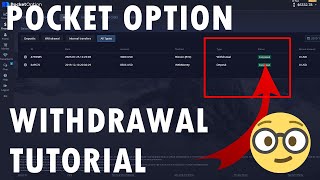

![Pocket Option Tutorial [ UDHËZUES I PLOTË I TREGTIMIT ] 📈 Si ta përdorni saktë për fillestarët](jpg/mqdefault-12.jpg)



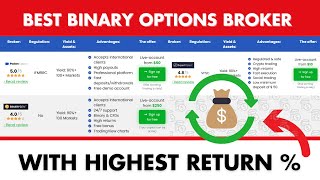









































































Opinionet nga komuniteti ynë tregtar
Jordan Peters
Tregtar i opsioneve binare
Faqe e madhe krahasimi. Binaryaoptions.com më tregoi ndërmjetësin binar më të mirë për investimet e mia. Unë tregtoj tani me kthime më të larta 20% sesa me ndërmjetësin tim të vjetër.
Andrea Walbet
Investitor i opsioneve binare
Faleminderit për informacionin e mrekullueshëm në këtë faqe interneti! Përmirësova strategjitë e mia tregtare për shkak të jush.
John Mueller
Tregtar i opsioneve binare